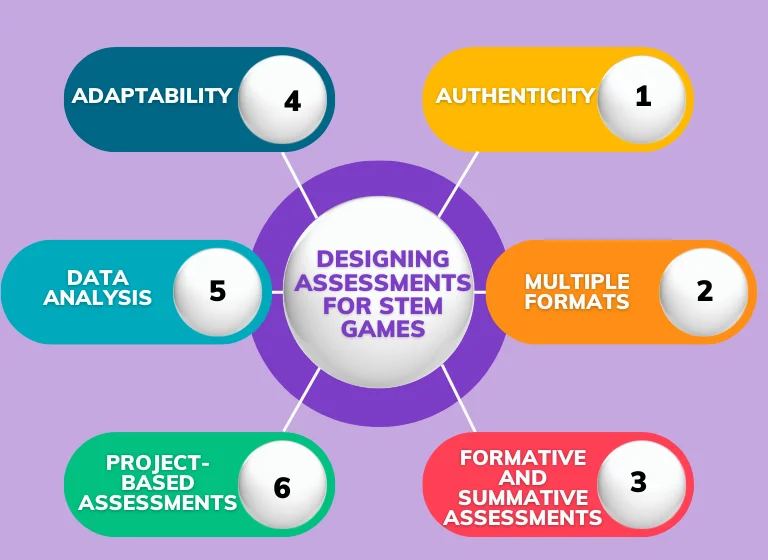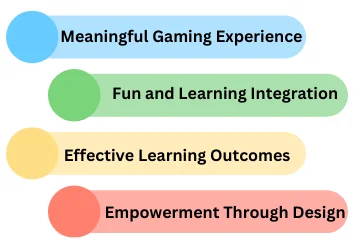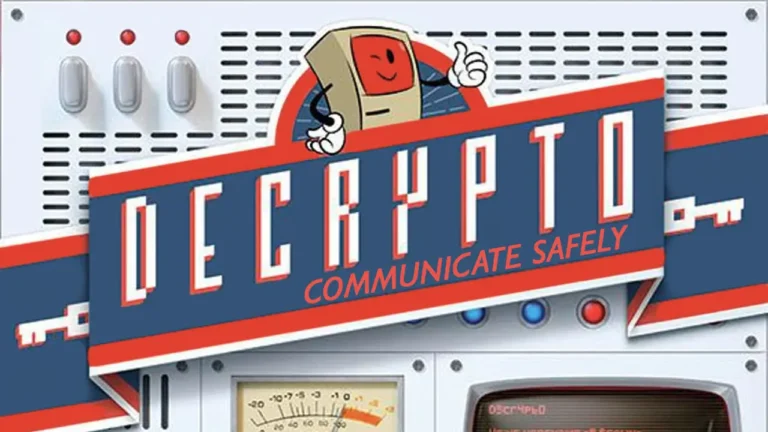Feedback and assessment are essential components of effective STEM game design. They can enhance players’ learning performances, motivation, and engagement. A critical aspect in evaluating an effective game design is to make it Funny” and “Educational”!
STEM games have revolutionized the way we approach teaching and learning. It combines entertainment and education to create immersive and engaging learning experiences. The effectiveness of STEM games relies on feedback and assessment while designing.
Continuous Feedback Importance in Effective STEM Game Design
Continuous feedback is important in effective STEM game design in several ways:
Usability and Knowledge Grasp
Feedback in STEM games helps to know usability issues and the player’s grip on the subject. This is vital to address the specific learning needs of the player.
Immediate vs. Delayed Repair
Feedback also plays a role in the timing of game-related activities. Negative feedback is more effective when immediate repair is possible. When the game is working fine, positive feedback works better. This knowledge helps in designing feedback mechanisms that align with the gameplay dynamics.
Improving Immersion and Learning Environment
STEM game design doesn’t only revolve around game elements and feedback. It also focuses on enhancing the learning experience. Researchers work on improving game immersion and the educational game environment. The focus should be on creating realistic learning situations.
Promoting Computational Thinking
Feedback mechanisms in STEM games contribute to developing skills like computational thinking. In modern education, the focus is on STEM subjects and computational skills.

Key Elements to Consider When Designing Assessments for STEM Games
When designing assessments for STEM games, there are several key elements to consider:
- Authenticity: The assessments should reflect real-world scenarios. It may include the type of problems students might face in STEM fields. This helps students see the relevance of their learning and promotes deeper understanding.
- Multiple Formats: Include many assessment formats, like multiple-choice, open-ended questions, or hands-on tasks. This allows for a comprehensive evaluation of student’s knowledge and skills.
- Formative and Summative Assessments: Formative assessments provide feedback to guide learning during gameplay. Summative assessments to check students’ performance at the end of the game.
- Adaptability: Assessments should adapt to students’ individual progress and skill levels. This ensures that the game provides an appropriate level of challenge for players.
- Data Analysis: Design assessments that generate meaningful data for educators. This will help to analyze student performance and identify areas of instructional focus. This can also inform future game design and instructional strategies.
- Project-Based Assessments: Include project-based assessments. This will allow students to engage in hands-on, inquiry-based learning experiences. It involves designing and implementing solutions to complex problems or conducting experiments.
How to Balance Entertainment and Education in STEM Game Design?
Balancing entertainment and education in STEM game design is key to creating a good learning atmosphere. Here are some key strategies:

Meaningful Gaming Experience
Design games that offer a meaningful gaming experience. It will help players to interact with STEM concepts in a virtual world. This engagement enhances learning motivation and interest in STEM subjects.
Fun and Learning Integration
Blend fun and learning in game design for students. This ensures the gameplay is enjoyable while delivering educational content. This balance keeps players engaged and eager to learn.
Effective Learning Outcomes
Focus on achieving realistic and measurable learning outcomes. Games should teach, practice, and encourage interest in STEM subjects. Avoid overstating the potential benefits of games and focus on educational effectiveness.
Empowerment Through Design
Empower students to become creators of STEM games. Encourage them to design and build their educational games. Foster a deeper understanding of STEM concepts while promoting creativity.
The Importance of User Testing in Effective STEM Games Design
User testing is important in designing effective and impactful STEM games for students:
Identification of Area of Improvement
User testing helps identify areas where the game is lagging. It will help the creator to make a better game to enhance the learning experience for students. This ensures that the game conveys educational content and concepts to students.
Accessibility
This ensures the game is accessible to a diverse audience. It helps to know how players can navigate and interact with the game. Make it inclusive for all learners, regardless of their backgrounds and abilities.
Reflective Practice
Continuously evaluating the game design based on user testing helps to improve effectiveness over time. This will help to make a better game to boost the overall performance of students.
Linkage to Skills
User testing helps in making a powerful STEM design by providing feedback. Consider how linkage to skill can enhance not only content knowledge but also critical reasoning, problem-solving, teamwork, and other STEM-related skills.
Real-life Examples and Case Studies
One notable example of a successful STEM game utilizing feedback is “Galaxy Explorers.” The game adapts to the player’s performance. It provides personalized feedback and challenges to promote deep learning for kids. Moreover, games like “Math Quest” have balanced education and entertainment. It captivates players while teaching mathematical concepts.
Conclusion
STEM game design, feedback, and assessments are vital to create valuable learning experiences. These elements work together to ensure that STEM games entertain and educate players. Game designers must work on continuous feedback throughout the game development process. This allows for adjustments and improvements to be made on time. This results in a more well-designed and successful STEM game design for students.






